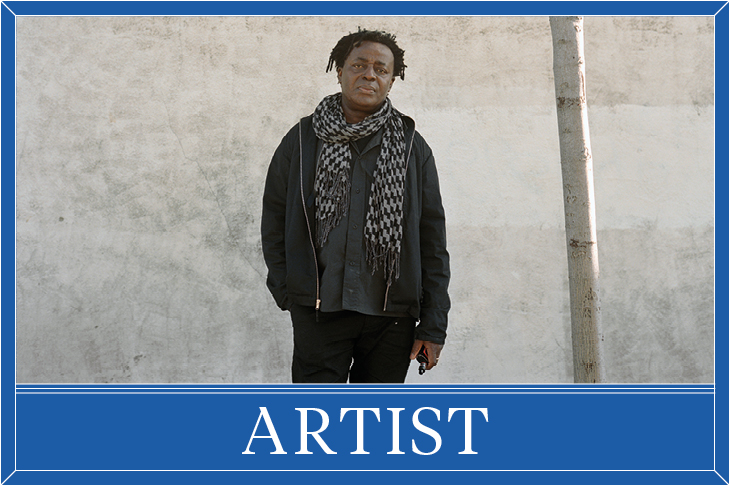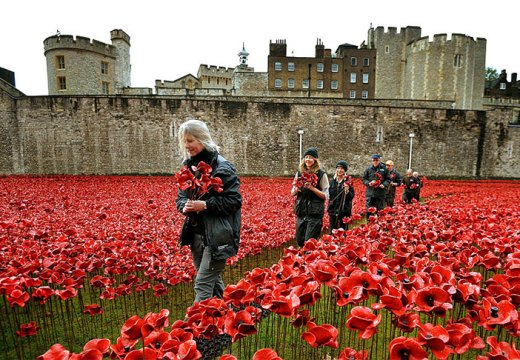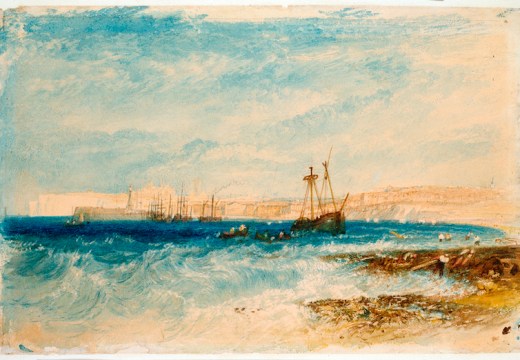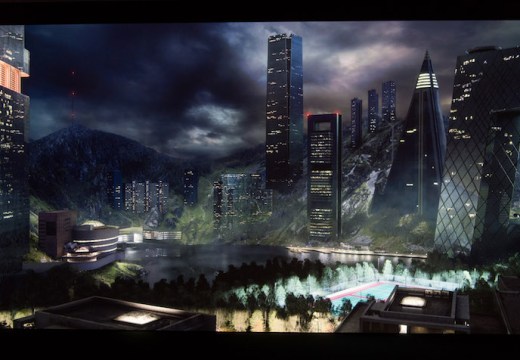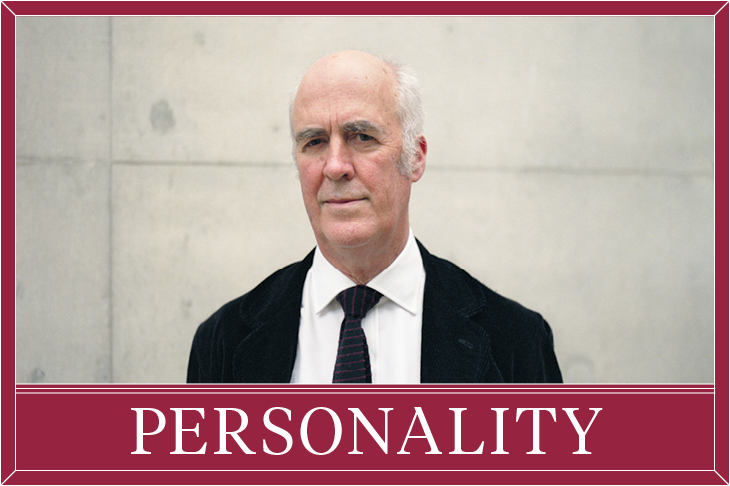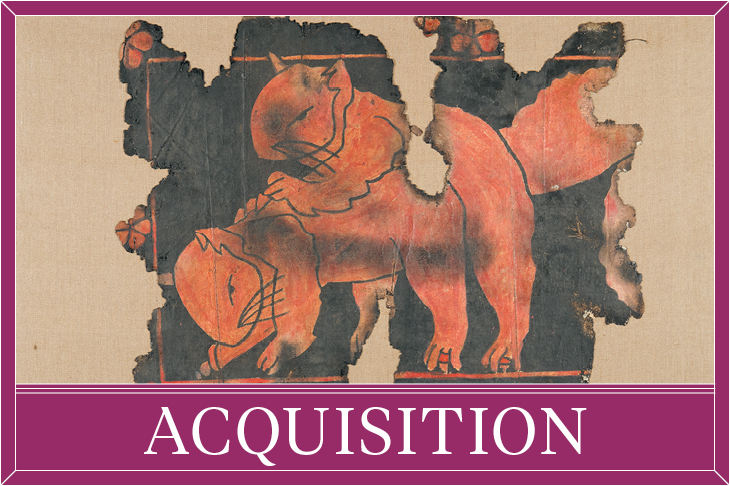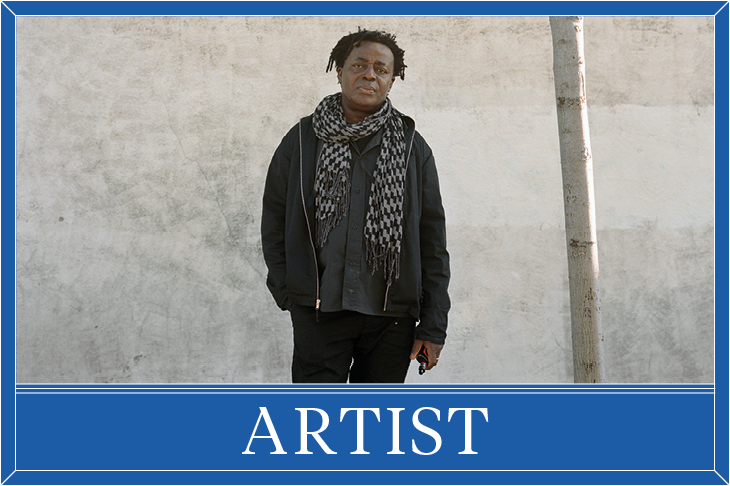John Akomfrah
The three screens that make up John Akomfrah’s new video installation, Mimesis: African Soldier (2018), keep shifting between black-and-white archive footage that occasionally flickers or judders and beautifully framed fictional scenes in colour that have been shot especially for the purpose. The work looks at the role of soldiers from the British Empire, who served in the First World War, and was commissioned in part by 14–18 NOW, a programme of events to commemorate the centenary of the Great War throughout the UK. The place where it is currently being shown – the Imperial War Museum in London (until 31 March 2019) – is the perfect venue, perhaps uncannily so. For Mimesis: African Soldier doesn’t pull any punches. After opening intertitles telling us how many colonial subjects fought in the First World War (six million; two million of those in Europe, 350,000 of whom died there – each statistic on a different screen), the central screen bears a remark attributed to Rosa Luxemburg: ‘Those who do not move, do not notice their chains.’
The polemical beginning is no accident, and not untypical of its creator. When I meet John Akomfrah in Hackney, at the offices of Smoking Dogs Films, which he founded in 1997 with his long-time collaborators Lina Gopaul and David Lawson, he says of the commission, ‘I’m glad it came to fruition this year, because it’s just on the eve of Brexit. One of the unintended consequences of this exit scenario is that you can feel this process of strategic forgetting […] that one of the reasons people want this is that they can return to something which this place was.’ Akomfrah’s work to date can be seen as a riposte to forms of historical forgetfulness that have repercussions in the present day. It’s an attitude that runs through all the projects that have by coincidence – each has been about three years in the making – been exhibited in the last year: Purple (2017), a six-channel video work first shown at the Barbican last October; Precarity (2017), a three-channel video about the jazz musician Charles ‘Buddy’ Bolden that premiered at Prospect.4 in New Orleans last year, and ‘Signs of Empire’, a survey – the artist’s first in the United States – at the New Museum in New York this summer, which also included films from Akomfrah’s Black Audio Film Collective period (1982–98).
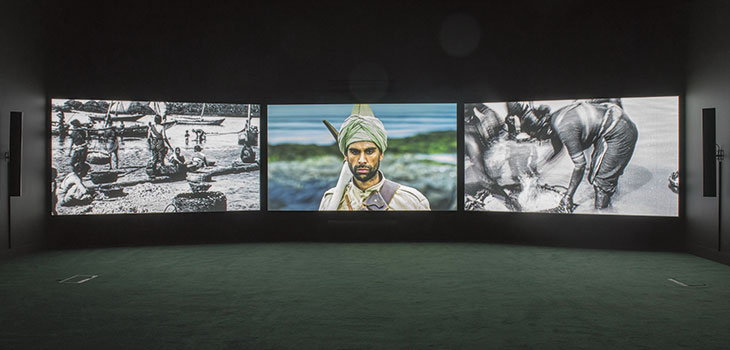
Mimesis: African Soldier (2018), John Akomfrah. © Smoking Dogs Films; courtesy Lisson Gallery
Mimesis: African Soldier is certainly trying to dispel some of the post-imperial nostalgia that Akomfrah has been dramatising and analysing throughout his career, a nostalgia that he clearly feels informed the result in the UK referendum on EU membership in 2016. Akomfrah says, ‘As a nation we’ve never been smaller. For the most part, the last three centuries had a Britain which covered much more land mass than it does now and included more people than it does now.’ If you take the long view, as the artist does, only in the short gap between the mass of British colonies becoming independent (‘it was mainly over by 1964’) and the UK joining the European Union has ‘Britain’ meant the British Isles alone. As Akomfrah puts it, ‘Unless you accept that there was a moment not that long ago – exactly a century ago – when a couple of million people felt it was important to give their life to this place, unless you realise that they had motives for doing it which were not just that they had to, you don’t quite get why so many people would be so upset with the Leave narrative.’
The couple of million who fought in Europe came from all over the Empire, as do the figures who are represented in the new video installation in both the archive and fictional footage. Akomfrah explains that, as the work’s title still suggests, he was commissioned to make something on African soldiers – ‘But I don’t do Bantustan to command! This is a serious point, because in our moment of overly ethnic stratification, one occasionally forgets that there were periods when, objectively, whether you were West African or South Asian or Indo-Chinese made no difference to your treatment.’
Akomfrah is such an engaging and articulate advocate for his art that there is a danger of his eloquence overshadowing the experience of seeing (and hearing) the works themselves – at least in the process of describing them to anyone who hasn’t seen them. The video works, which have become increasingly ambitious multi-channel affairs over the years, are intricate collages of images and sound that make their first appeal to the eye and the ear. While Akomfrah and his closest collaborators are completely at home in a theoretical language that stems from a distinctively late 1970s/early ’80s meeting of art, sociology and psychoanalysis, the work is never didactic. However, as Lina Gopaul tells me: ‘We wanted to make a little bit of a difference, we wanted to tackle the issue of representation, or lack of representation, as the debates were at the time. You just saw that you were missing. In the subjects that some of us were studying – sociology, race relations, politics – we were always seen as “the problem”.’
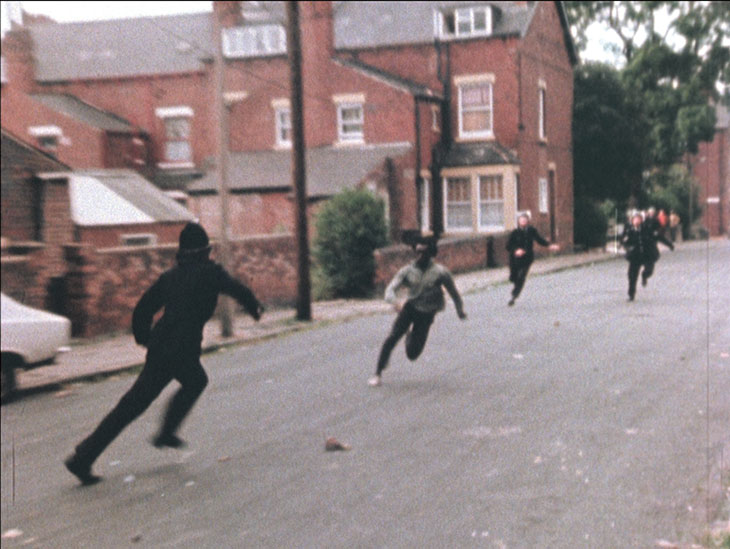
Handsworth Songs (video still; 1986), John Akomfrah. © Smoking Dogs Films; courtesy Lisson Gallery
The ‘we’ Gopaul is referring to is the group of students who met at Portsmouth Polytechnic and left in 1982 as Black Audio Film Collective. Although the collective split in 1998, Akomfrah, Gopaul and Lawson – plus the sound artist Trevor Mathison, who scored some of the best known Black Audio films, including the avant-garde documentary Handsworth Songs (1986) – have now been working together in one form or another for more than 35 years. From Akomfrah’s explanation of his process, his video works are still a collective effort, in a way that goes beyond the inherently collaborative nature of film-making: ‘Every time I start one of these things with the team, people suggest things. So, for instance, for this particular project [Mimesis: African Soldier] – Lina and Ashitey [Akomfrah’s son] did masses of research and my job always seems to me about saying what doesn’t belong, whether it’s archival material or stories or characters: we don’t need this, we don’t need that.’
The importance of editing and form in Akomfrah’s work – and they change the subject at hand – is most evident when he has made two different pieces using some of the same material. Mnemosyne (2010) is a 45-minute-long single-screen installation made for a gallery space that combines archival clips of Birmingham from the early 1960s to ’80s with footage of Alaska that Akomfrah shot for a Channel 4 documentary about the Exxon Valdez disaster; The Nine Muses (2012) is a 92-minute-long feature that uses some of the same footage, but takes the opportunity to retell The Odyssey in nine chapters, some of which are filmed in Alaska, on a grander scale than Mnemosyne could manage. The later work is more elegiac, and makes a point of lingering on the solitary figure – who also appears in Mnemosyne – wearing a series of brightly coloured parkas in the wintry landscape.
The lone black figure in the landscape has become a recurring element in Akomfrah’s films – perhaps the most striking of them all is the red-coated tricorn hat wearing figure who appears for a moment in Vertigo Sea (2015), a work that touches on migration, whaling, and the oceans, and which was shown at the Venice Biennale. Akomfrah explains that the figure was in part inspired by Olaudah Equiano, the 18th-century slave who bought his freedom, campaigned for Abolition and wrote a celebrated autobiography. The image of the Romantic wanderer has become Akomfrah’s shorthand for the mental journey that everyone who has ever moved from one country to another makes. It began to form in his mind, he says, from talking to what he calls the ‘Windrush Generation’ – even though he is not fond of a term that is ‘too Caribbean’; it is his mother’s generation – she came to the UK from Ghana after the coup in 1966 (his father was a leading member of Kwame Nkrumah’s party). In the many interviews he has conducted, ‘their description was always in existential terms. That didn’t mean that because it was in existential terms it then varied wildly. It didn’t at all! There were primal scenes that they all seemed to remember: “Oh, when I came I felt really alone” (even though they were on a boat with 700 other people). They go, “It was really cold” and actually, you find out, it was July!’
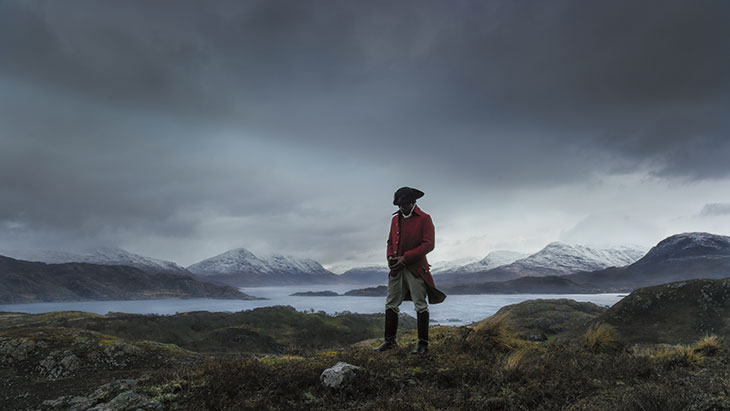
Vertigo Sea (still; 2015), John Akomfrah. Courtesy Lisson Gallery; © Smoking Dogs Films
Mnemosyne/The Nine Muses not only put black figures into landscapes where we are not used to imagining them, despite the historical evidence; we watch them wander through these landscapes soundtracked by passages from Paradise Lost and snatches of Winterreise (among other elements). At the time it was something of a departure. ‘I’ve argued with friends and colleagues about this for ever. Many refuse to accept that if you say that you are a Black British figure, that could very well also mean that you have an investment in recovering insights from Milton to Pound […].’
His existential Romantic wanderers are perfect, art-historically informed avatars of what Akomfrah, echoing the writer and thinker Stuart Hall (a formative influence and the subject of two of his best works), calls ‘diasporic figures caught somewhere between history and myth’. This gap – something of a no-man’s-land – is where ‘strategic forgetting’ and the attempt to dispel historical amnesia fight it out for supremacy.
Akomfrah has often spoken of how, as a teenager growing up in Parsons Green, he would go to the Tate every weekend. He’s very interested these days in painting as a kind of ‘philosophical shorthand’ and in how every variation – of colour, of the treatment of the human figure in a landscape – can ‘denote, signify, connote, designate something different’ each time: ‘Matisse’s use of red is definitely not the same as Tintoretto’s, for instance – you just see that.’
For all the visual and thematic ambition of his works and the acclaim (including the Artes Mundi prize in 2017), Akomfrah is self-deprecating in the way that only someone who has more avenues to explore can be. ‘When you make time-based work,’ he says, ‘you get used to being under the radar. We’re not naïve – you know that in this league, painters are definitely at the top. I don’t feel as if the work is made to court adulation or controversy. I have certain questions I want to address – to myself principally and my co-workers. And once we’ve done that, we don’t always succeed – and that’s the spur to go on to the next project.’
Fatema Ahmed is deputy editor of Apollo.

The Winners | Personality of the Year | Artist of the Year | Museum Opening of the Year | Exhibition of the Year | Book of the Year | Digital Innovation of the Year | Acquisition of the Year | View the shortlists
Unlimited access from just $16 every 3 months
Subscribe to get unlimited and exclusive access to the top art stories, interviews and exhibition reviews.

